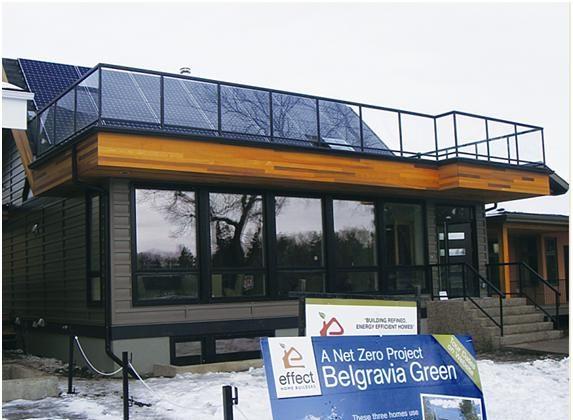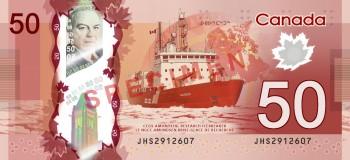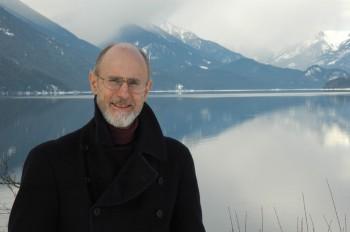A U.S. environmental organization is calling on Canada’s provincial, federal, and aboriginal leaders to increase protection of the country’s vast boreal forest.
In a report that compiles decades of research, scientists with the non-profit Pew Environmental Group found that protecting the forest is a top global priority in a time of such pressing issues as acute freshwater scarcity, widespread pollution, and water diversion.
Covering an expanse ranging from the Yukon Territory to Newfoundland and Labrador, the boreal is the world’s largest intact forest and contains more unfrozen freshwater than any other ecosystem, according to the report.
But as global demand for resources rise, the forest is increasingly impacted by large-scale industrial activities, and Pew researchers say protecting the forest is imperative.
“Enacting sound conservation policy to protect Canada’s free-flowing waters and wetlands in the boreal is not just a local issue; it is one of global importance,” said University of Alberta ecologist David Schindler.
Schindler is a member of the International Boreal Conservation Science Panel, composed of leading scientists from Canada and the U.S., which reviewed the report.
Another threat includes the more than 3,000 abandoned mines in the boreal which are leaking toxic byproducts, including arsenic dust, into surrounding waters that will cost millions to clean up, the report says.
Titled “A Forest of Blue: Canada’s Boreal Forest, the World’s Waterkeeper,” the report says the boreal contains 25 percent of the planet’s wetlands ecosystems, millions of pristine lakes, and thousands of free flowing rivers, totalling 197 million acres of surface freshwater.
Nearly half of the earth’s freshwater lakes are contained in boreal wetlands, as well as five of the 50 longest rivers in the world.
The huge ecosystem is also home to an extremely diverse range of wildlife, including caribou, moose, bears, wolves, many varieties of migratory birds and fish, as well as half of the population of wild North American Atlantic Salmon.
The freshwater flows and wetlands are an interconnected network that supports all of these forms of wildlife, as well as the aboriginal peoples who are living off the land.
Freshwater that flows into the Hudson’s Bay, Pacific, Atlantic, and Arctic oceans from this region is also vital for the world’s ocean systems as it cools the atmosphere and supports ocean currents and marine life, according to the report.
“At a time when clean water supplies are disappearing, the vast reserves in Canada’s boreal are increasingly important to protect,” said Steve Kallick, director of the Pew Environmental Group’s International Boreal Conservation Campaign.
About 185 million acres have been set aside from development to date representing more than 12 percent of the 1.2 billion acre forest.
“Canadian provinces and First Nations have already made major strides defending the integrity of the vast lakes, rivers, and wetlands in the forest, but they need to do more to guarantee that Canada’s water stays pure and abundant, watershed by watershed,” Kallick said.
The report recommends that governments protect entire river, lake, and wetland ecosystems by preserving intact 50 percent of the forest, and require sustainable practices for industrial activities taking place in the remaining areas.
“Canada has an extraordinary opportunity that does not exist anywhere else in the world to keep its aquatic ecosystems intact and to create a positive ripple effect on the land, animals, birds and people who depend on these resources,” said Stuart Pimm, Doris Duke Chair of Conservation Ecology at Duke University and IBCSP member.
The report estimates the boreal provides $700 billion value annually as a buffer against climate change and food and water shortages.
In a report that compiles decades of research, scientists with the non-profit Pew Environmental Group found that protecting the forest is a top global priority in a time of such pressing issues as acute freshwater scarcity, widespread pollution, and water diversion.
Covering an expanse ranging from the Yukon Territory to Newfoundland and Labrador, the boreal is the world’s largest intact forest and contains more unfrozen freshwater than any other ecosystem, according to the report.
But as global demand for resources rise, the forest is increasingly impacted by large-scale industrial activities, and Pew researchers say protecting the forest is imperative.
“Enacting sound conservation policy to protect Canada’s free-flowing waters and wetlands in the boreal is not just a local issue; it is one of global importance,” said University of Alberta ecologist David Schindler.
Schindler is a member of the International Boreal Conservation Science Panel, composed of leading scientists from Canada and the U.S., which reviewed the report.
Another threat includes the more than 3,000 abandoned mines in the boreal which are leaking toxic byproducts, including arsenic dust, into surrounding waters that will cost millions to clean up, the report says.
Titled “A Forest of Blue: Canada’s Boreal Forest, the World’s Waterkeeper,” the report says the boreal contains 25 percent of the planet’s wetlands ecosystems, millions of pristine lakes, and thousands of free flowing rivers, totalling 197 million acres of surface freshwater.
Nearly half of the earth’s freshwater lakes are contained in boreal wetlands, as well as five of the 50 longest rivers in the world.
The huge ecosystem is also home to an extremely diverse range of wildlife, including caribou, moose, bears, wolves, many varieties of migratory birds and fish, as well as half of the population of wild North American Atlantic Salmon.
The freshwater flows and wetlands are an interconnected network that supports all of these forms of wildlife, as well as the aboriginal peoples who are living off the land.
Freshwater that flows into the Hudson’s Bay, Pacific, Atlantic, and Arctic oceans from this region is also vital for the world’s ocean systems as it cools the atmosphere and supports ocean currents and marine life, according to the report.
“At a time when clean water supplies are disappearing, the vast reserves in Canada’s boreal are increasingly important to protect,” said Steve Kallick, director of the Pew Environmental Group’s International Boreal Conservation Campaign.
About 185 million acres have been set aside from development to date representing more than 12 percent of the 1.2 billion acre forest.
“Canadian provinces and First Nations have already made major strides defending the integrity of the vast lakes, rivers, and wetlands in the forest, but they need to do more to guarantee that Canada’s water stays pure and abundant, watershed by watershed,” Kallick said.
The report recommends that governments protect entire river, lake, and wetland ecosystems by preserving intact 50 percent of the forest, and require sustainable practices for industrial activities taking place in the remaining areas.
“Canada has an extraordinary opportunity that does not exist anywhere else in the world to keep its aquatic ecosystems intact and to create a positive ripple effect on the land, animals, birds and people who depend on these resources,” said Stuart Pimm, Doris Duke Chair of Conservation Ecology at Duke University and IBCSP member.
The report estimates the boreal provides $700 billion value annually as a buffer against climate change and food and water shortages.



